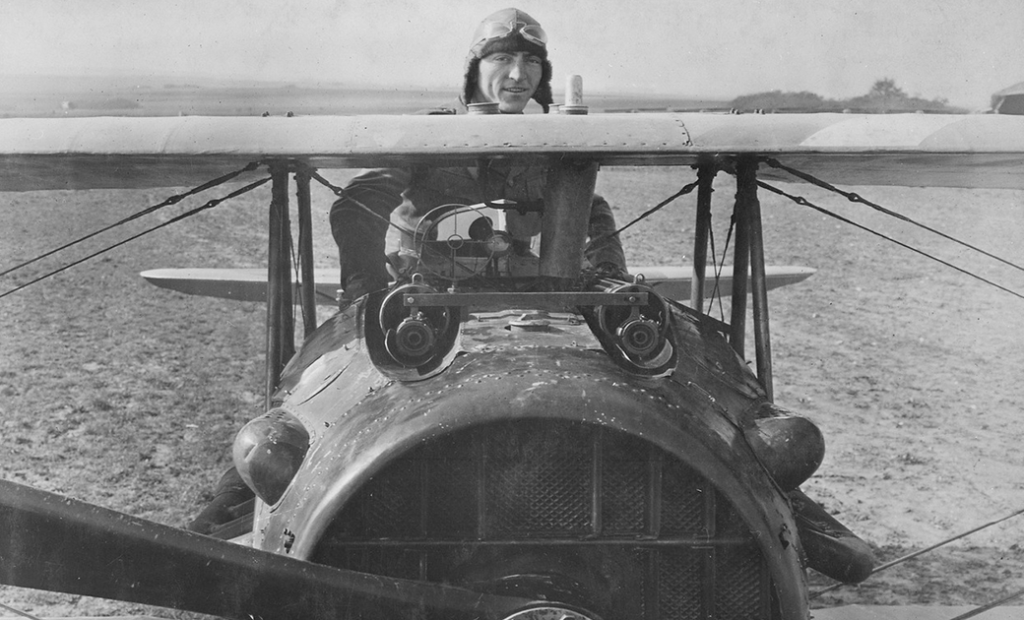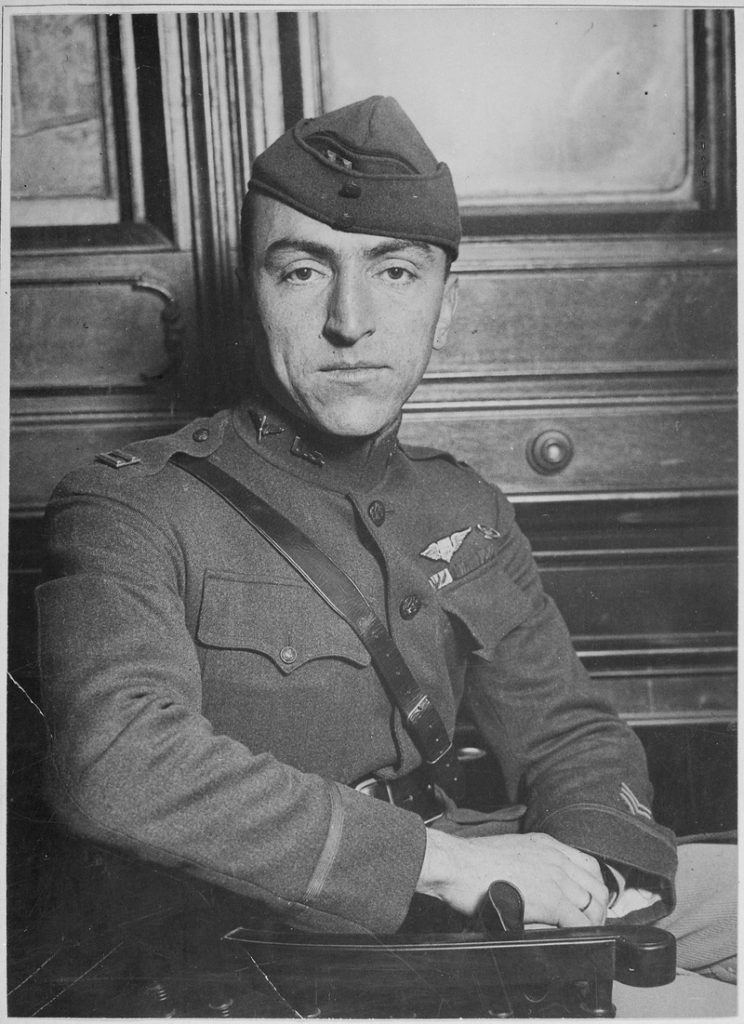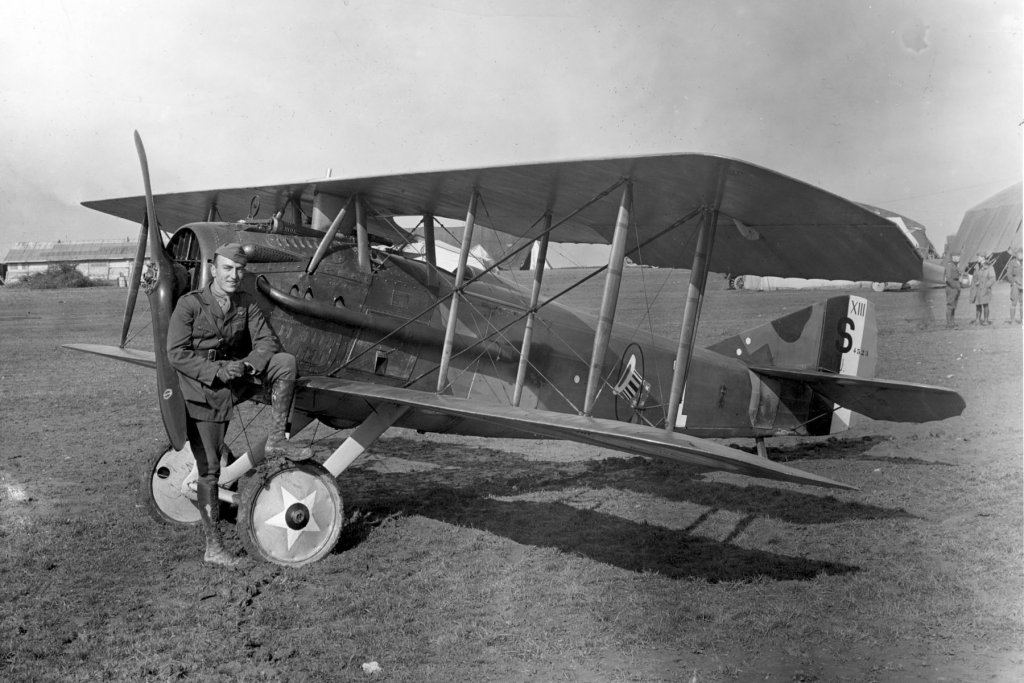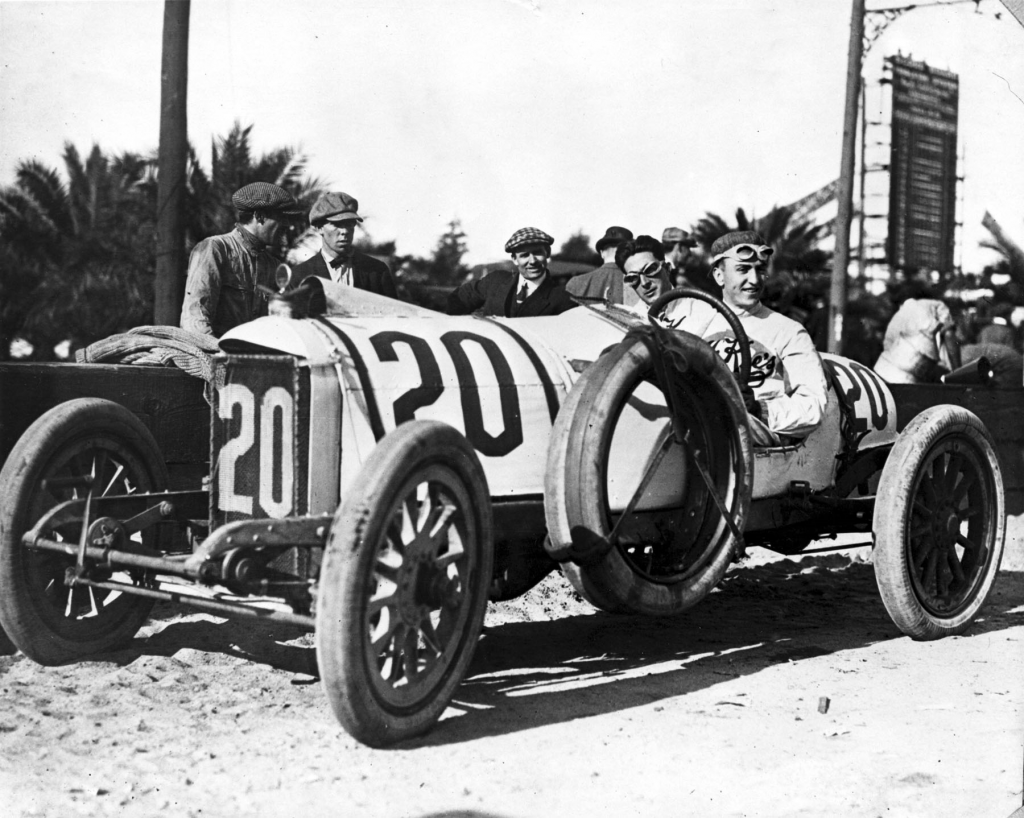
by Steve Jones
Less than two miles east of the National Veterans Memorial and Museum, at 1334 East Livingston Avenue in Columbus, Ohio, sits an unassuming wood framed house with a small historical marker that is easy to miss. It is the childhood home of a true American hero and Columbus native, Captain Eddie Rickenbacker. His story, one of hundreds told throughout the National Veterans Memorial and Museum, is inspirational and legendary.
After surviving several near-death experiences during an accident-prone childhood, young Eddie Rickenbacker believed his life was reserved for a greater purpose. Growing up in Columbus, he preferred hands-on training and self-taught engineering to formal schooling, spending time as an apprentice with the Columbus Buggy Company (Presently “The Buggy Works,” a residential development) and later with the Duesenberg Motor Company of Iowa, a manufacturer of race cars.
Most are aware of Captain Rickenbacker’s legendary accomplishments during his military service. Despite a lack of significant formal education, he persuaded Army leadership to allow him to train as one of the first pursuit pilots. A former race car driver, he was to convert his legendary courage and aggressiveness into one of the most successful careers in military history as a fighter ace. His 26 confirmed kills during WWI, a result of repeatedly attacking enemy aircraft alone or outnumbered, was a record that stood until the later part of WWII. He received the Congressional Medal of Honor and a record eight Distinguished Service Crosses, as well as the Legion of Honor and the Croix de Guerre by France. Few among us are capable of becoming a race car driver or fighter pilot. He was both. But his heroism extended beyond his military service.
Captain Eddie (He was a Major when discharged but preferred to be called “Captain Eddie” the rest of his life) was actually declared dead by the press twice (In an early example of “fake news”) after leaving the service. In 1941 he was critically injured in a civilian airline crash, with injuries so severe, he lay untreated for several hours while others received medical attention since doctors considered his wounds fatal. Despite his severe injuries, he encouraged other survivors to persevere and seek assistance.
Shortly afterward, still suffering from his previous injuries, he was a passenger in a B-17 that was forced to ditch in the Pacific Ocean. All but one of the passengers were rescued 24 days after being adrift at sea. Survivors, all suffering from hyperthermia, sunburn, dehydration and near starvation, credit Captain Eddie’s leadership and calm demeanor under horrible conditions for their survival. He went on to serve his country in various capacities and later founded Eastern Airlines.
You can almost see Greenlawn Cemetery, where Captain Eddie Rickenbacker lies in rest, from the roof of the National Veterans Memorial and Museum. If not for a few buildings, Captain Eddie’s grave would be visible.
A former boss of mine once told me, “Leadership is easy when no one is shooting at you.” I suspect Captain Eddie might agree. And he never heard of the coronavirus.
Photos courtesy of U.S. National Archives, U.S. Air Force, and the National Park Service
Steve Jones, U.S. Air Force Veteran, is a volunteer at the National Veterans Memorial and Museum. He served 21 years as an Active Duty Air Force officer, specializing in Air Battle Management. He had assignments worldwide, including multiple deployments to the Middle East, South and Central America. After retiring from the Air Force, he taught high school history and worked in private sector management. Jones and his wife have one son who is an Air Force fighter pilot and two granddaughters.







